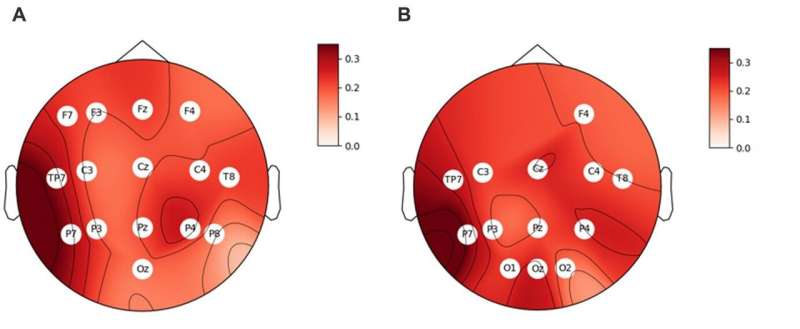This article has been reviewed according to Science X's editorial process and policies. Editors have highlighted the following attributes while ensuring the content's credibility:
fact-checked
peer-reviewed publication
proofread
Researchers predict film popularity by the activity of facial muscles

Researchers from HSE University and MEPhI have analyzed which physiological indicators recorded when watching a movie can predict the audience's assessment. It turned out that the activity of zygomaticus major (the "smiling muscle"), heart rate variability and EEG indicators can tell us most about the viewer's impression of the movie.
The results of the study were published in Frontiers in Neuroscience.
Neither film industry experts nor analysts can predict in advance whether a film will be a blockbuster or a flop at the box office. An expensive movie with an all-star cast may fail, and film studios and investors suffer heavy losses.
Closed surveys of focus groups of the film's early version allow producers to avoid failures. After the test viewing, viewers give their opinion about the picture through questionnaires and interviews. If the film has received poor ratings and reviews, it will often be significantly changed before the premiere.
However, subjective assessment of the film can be distorted by many factors—from social desirability bias to the fading of immediate feelings by the time the survey itself is conducted. One way to objectively assess the impact of a film on a person is to measure their psychophysiological reactions at the time of viewing. A team of Russian researchers from the HSE University and MEPhI decided to check which physiological indicators during viewing can be used to predict the film scores.
Twenty-one people participated in the experiment, with an average age of 22.5 years. The participants watched eight short films (four comedies and four dramas) with an average duration of six minutes. Each participant watched the short films in random order with a break of one minute between them. Immediately after watching each film, the participant rated it on a scale from 1 to 10.
Throughout the experiment, the electrical activity of the brain and facial muscles of the participant were recorded using an electroencephalograph (EEG). A photoplethysmograph recorded changes in heart rate, and the activity of facial muscles was recorded using electromyography.
The researchers then analyzed which physiological indicators recorded during the viewing of the films correlated with the films' scores. The activity of the large zygomaticus major directly correlated with the assessment. There was also a relationship between the films' scores and the heart rate variability parameters that reflect emotional states.
In addition, the indicators of engagement, arousal and valence of the physiological manifestation of emotions, calculated via brain rhythms, positively correlated with the assessment. This means that, if a film evoked intense positive emotions in the participants, which were recorded by the EEG, it also tended to receive high scores.
The researchers then trained a machine learning model based on all recorded physiological data to predict how the participant would rate the film—positively or negatively. The best model—logistic regression—predicted the results correctly in 60% of cases.
The analysis of facial electromyography also showed that while watching dramas, the corrugator supercilii muscle (the "frowning" muscle) was more often involved, while comedies more often caused the activity of the zygomaticus major muscle. Furthermore, the intensity of the experiences didn't depend on the genre of film: there was no difference in the pulse rate and skin conductance when watching comedy or drama.
"Thanks to this technology for predicting film success based on physiological indicators, filmmakers will be able to edit their works even during the filming process. And viewers should be less disappointed. In my opinion, one of the most promising areas of applied psychophysiology of art is simple and inexpensive instruments for measuring, for example, respiratory rate, heart rate or body temperature," says Vladimir Kosonogov, author of the article, head of the International Laboratory of Social Neurobiology.
More information: Vladimir Kosonogov et al, EEG and peripheral markers of viewer ratings: a study of short films, Frontiers in Neuroscience (2023). DOI: 10.3389/fnins.2023.1148205



















